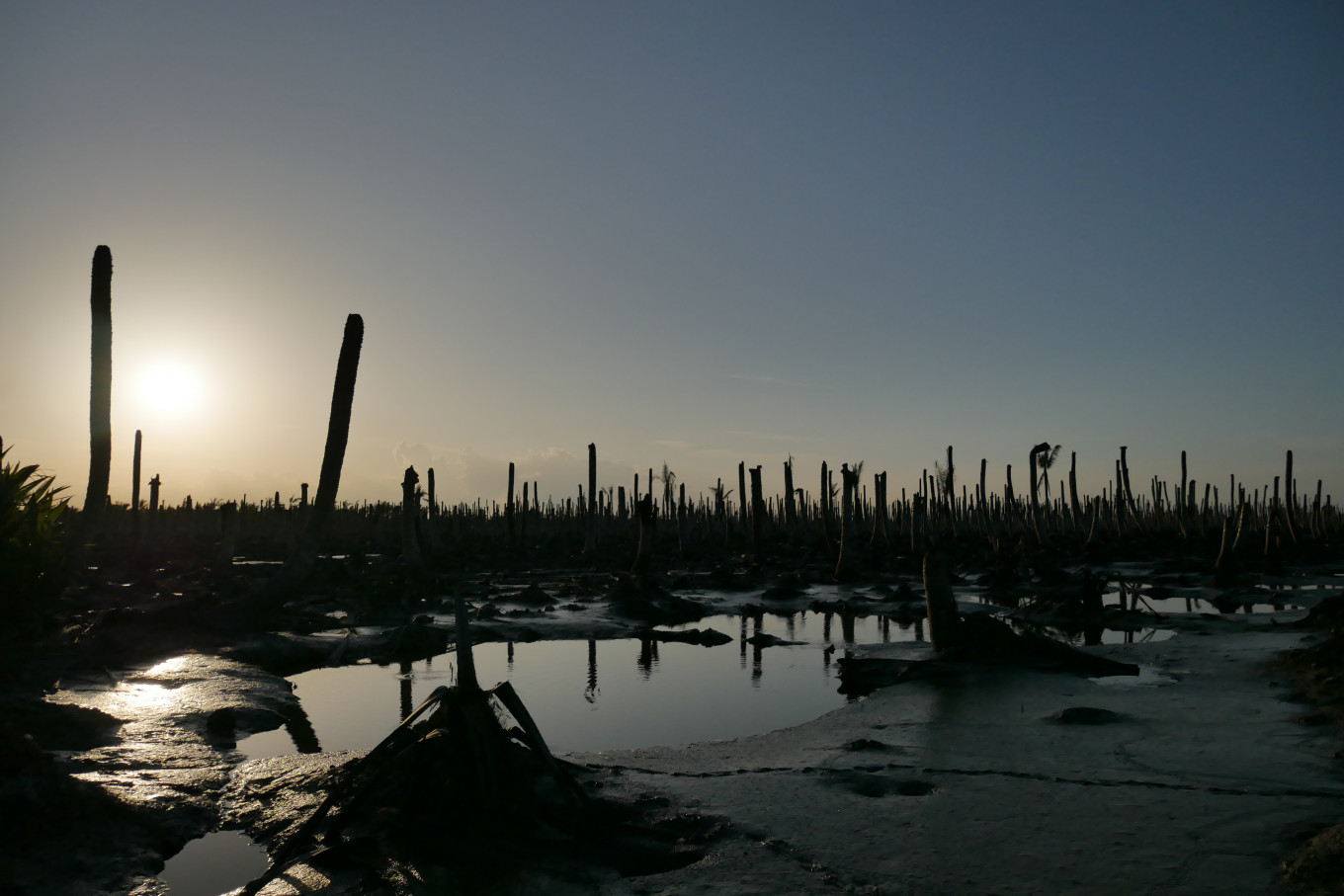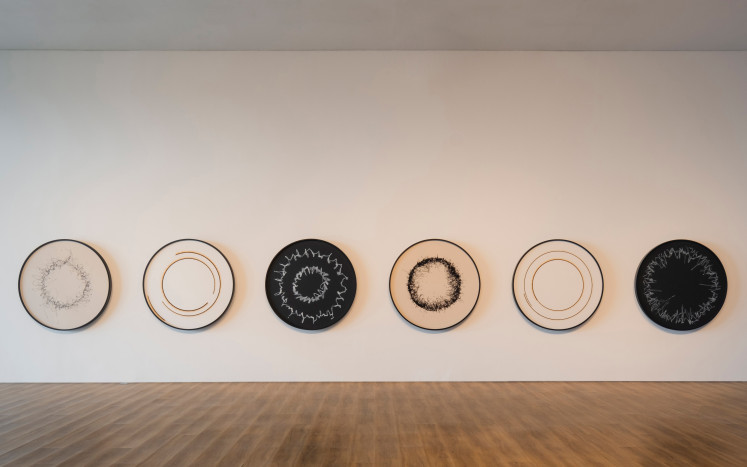Popular Reads
Top Results
Can't find what you're looking for?
View all search resultsPopular Reads
Top Results
Can't find what you're looking for?
View all search resultsSumatran coastal village scrambles to save lost livelihood, disappearing land
First, they lost their home, then their source of livelihood and clean water. Villagers and officials are scrambling to save Indragiri Hilir in Riau from coastal erosion before the encroaching seawater seizes their lives forever.
Change text size
Gift Premium Articles
to Anyone
 Barren land: Rows of dead coconut trees are seen in this photo taken on July 25, 2023 in one of the former coconut plantations of Kuala Selat village in Indragiri Hilir, Riau. Seawater is intruding further inland as the village loses the mangrove forests that protect it from waves and erosion. (JP/Tonggo Simangunsong)
Barren land: Rows of dead coconut trees are seen in this photo taken on July 25, 2023 in one of the former coconut plantations of Kuala Selat village in Indragiri Hilir, Riau. Seawater is intruding further inland as the village loses the mangrove forests that protect it from waves and erosion. (JP/Tonggo Simangunsong)
A
bdul Gani used to sail to a nearby mangrove forest in Kuala Selat village in Indragiri Hilir, Riau to catch fish, especially when the water was deep because shrimps often lay their eggs among the mangrove roots.
But when the mangrove disappeared from the village, it was almost impossible to fish near the coast. The forest, which had been a breeding ground for marine animals, was no longer there.
Now, Abdul and other traditional fisherfolk must go further afield to catch fish. “The closest we go to is 3.2 kilometers from the land. Sometimes, we go up to 4.8 km [out],” he said.
Kuala Selat has suffered from coastal erosion in the past few decades as the village loses its rows of mangroves, the natural protection against sea waves that have been gnawing away the land. The abrasion has taken its toll on the villagers: they lose their home and later their source of livelihood.
The Indragiri Hilir regency had around 112,500 hectares of mangroves in 1990, but the coastal forest had depleted to just 95,600 ha by 2019, according to Riau-based Jikalahari environmental group.
Read also: After mangroves disappear, Sumatran village braces for worsening tidal waves
The mangrove deforestation has impacted the fishermen’s income.


















